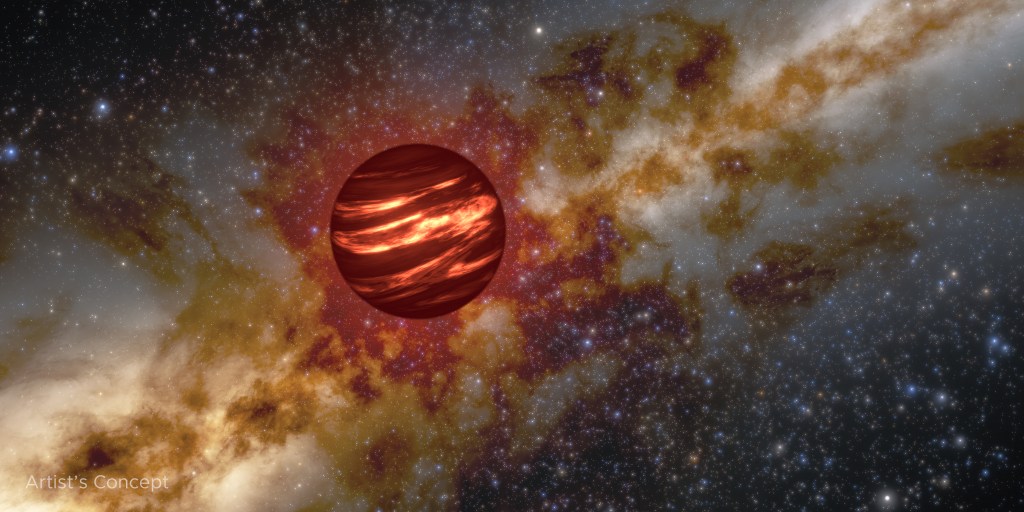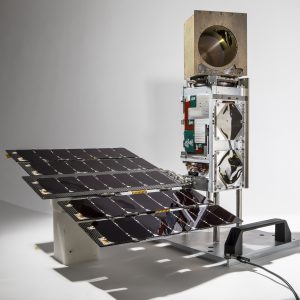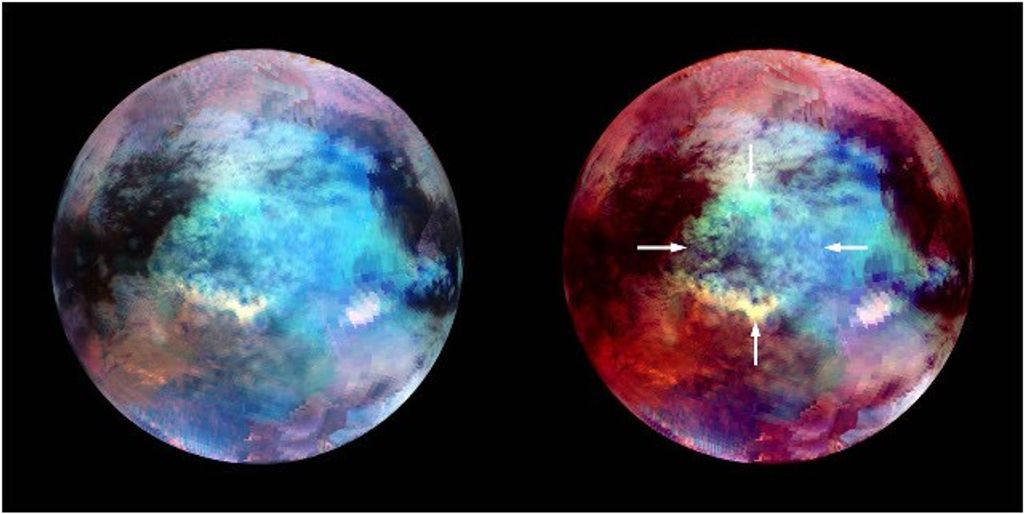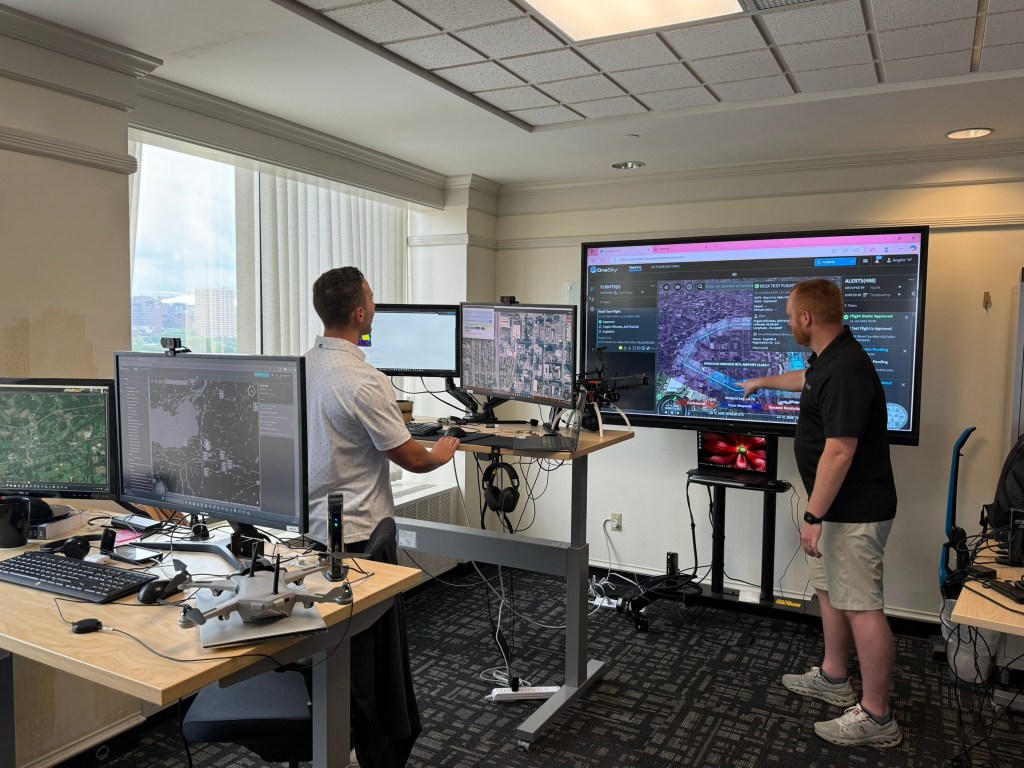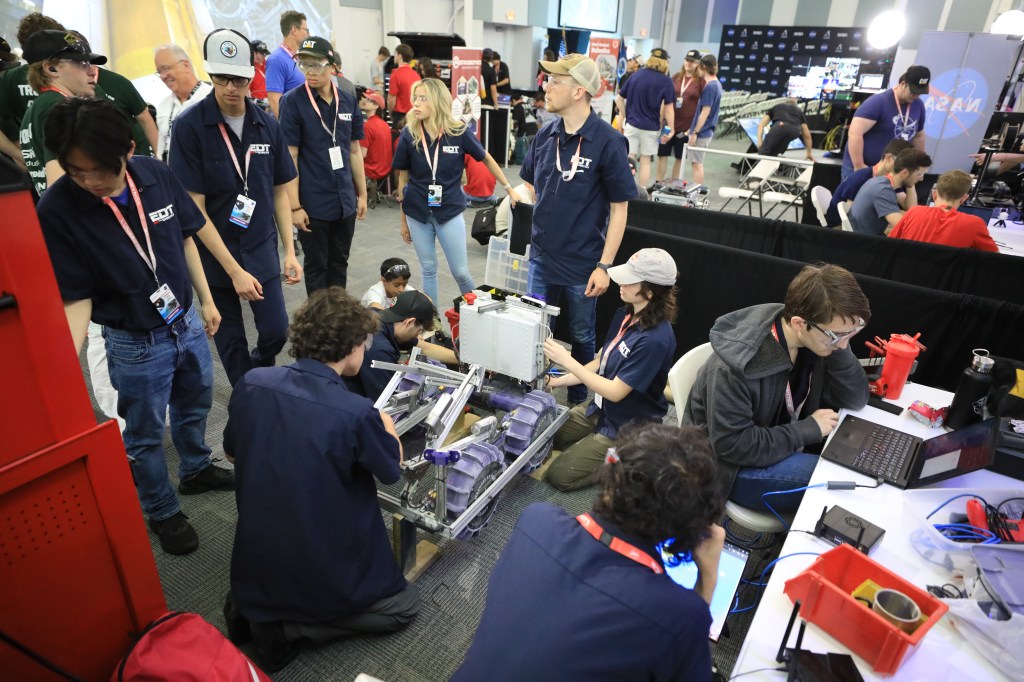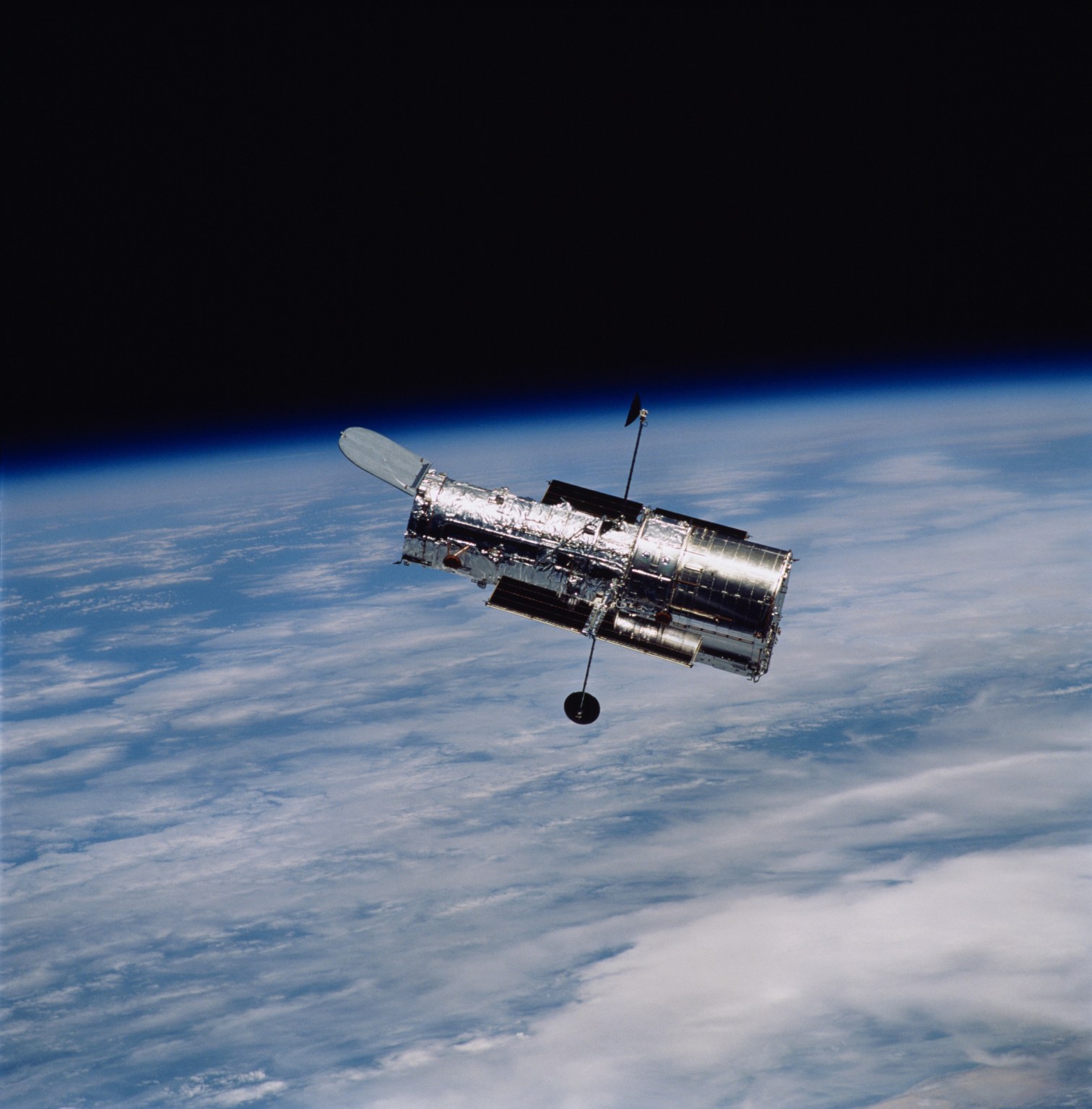1 min read
Artist’s View of Planet Around a Red Dwarf

This is an artist's concept of a gas giant planet orbiting a red dwarf K star (system name OGLE-2003-BLG-235L/MOA-2003-BLG-53L). The planet has not been directly imaged, but its presence was detected in 2003 microlensing observations of a field star in our galaxy. Gravitational microlensing happens when a foreground star amplifies the light of a background star that momentarily aligns with it. Follow-up observations by Hubble Space Telescope in 2005 separated the light of the slightly offset foreground star from the background star. This allowed the host star to be identified as a red dwarf star located 19,000 light-years away. The Hubble observations allow for the planet's mass to be estimated at 2.6 Jupiter masses. The characteristics of the lensing event show that the planet is in a Jupiter-sized orbit around its parent red star. The rings and moon around the gas giant are hypothetical, but plausible, given the nature of the family of gas giant planets in our solar system.
- Release DateAugust 8, 2006
- Science ReleaseHubble Identifies Stellar Companion to Distant Planet
- Credit
Related Images & Videos
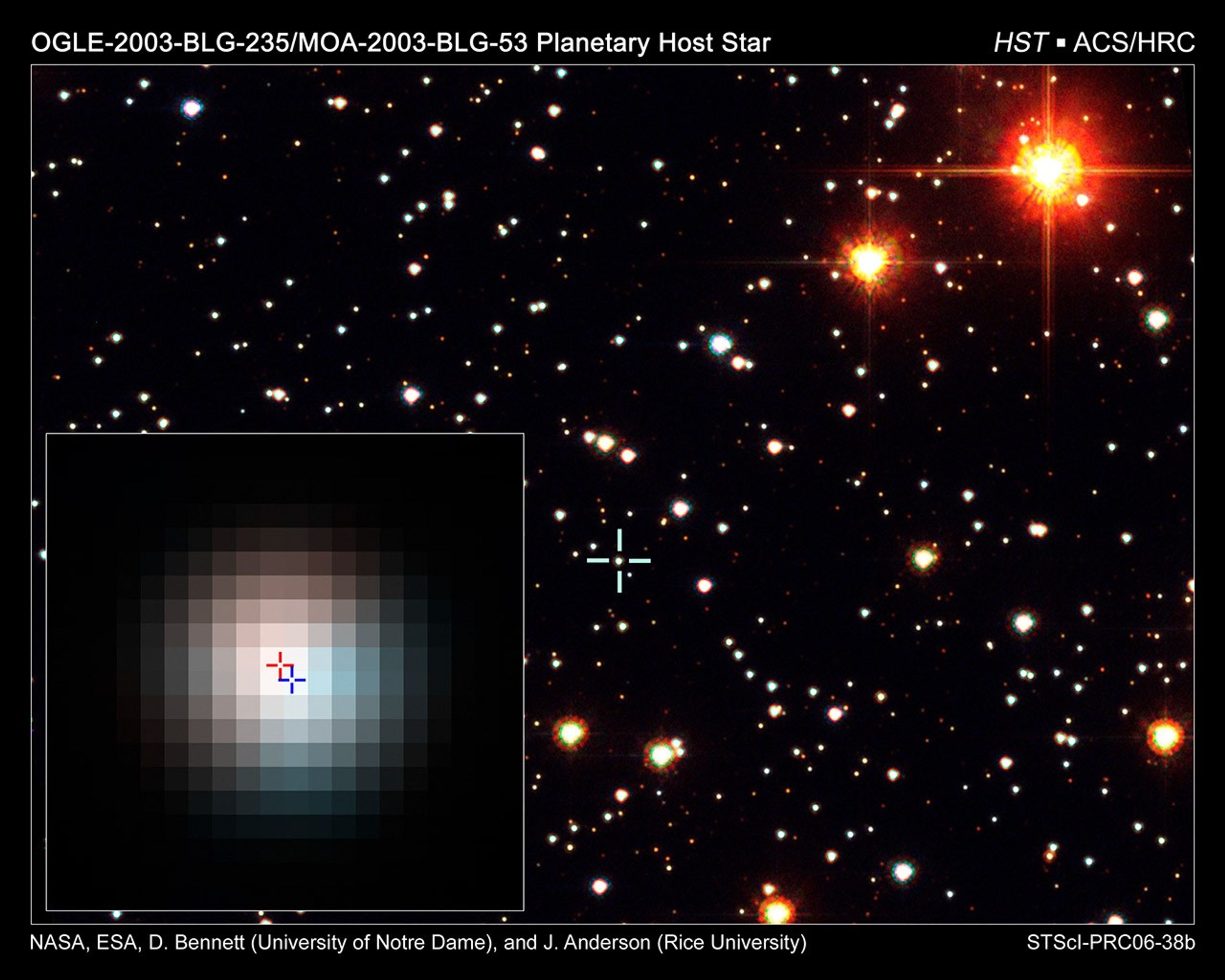
Identification of Exoplanet Host Star
This is a Hubble Space Telescope view of a small region of our galaxy where the host star to a gravitationally lensed planet (catalogued as OGLE-2003-BLG-235L/MOA-2003-BLG-53L) is located. The star is identified by the crosshatch at frame center. The planet was first identified...

Identification of Exoplanet Host Star
[bottom left text] Hubble Space telescope observed and identified the host star to a gravitationally lensed planet first discovered in 2003 by ground-based telescopes. [left box] A foreground red star and planet drifts toward the sky position of a much farther sunlike...
Share
Details
Last Updated
Aug 17, 2025
Contact
Media
Claire Andreoli
NASA’s Goddard Space Flight Center
Greenbelt, Maryland
claire.andreoli@nasa.gov

